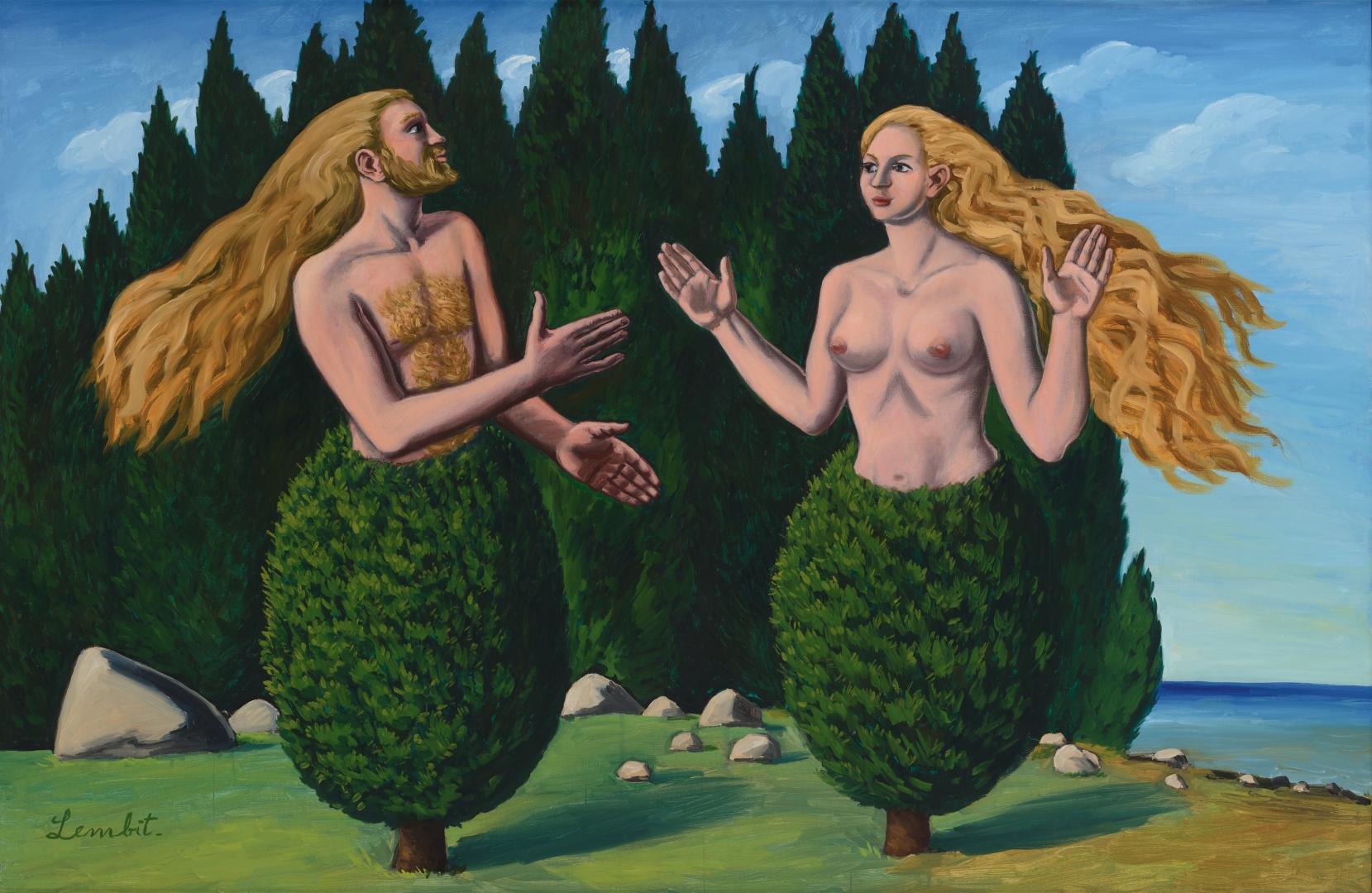Over the six decades during which Lembit Sarapuu (b. 1930) has been active as an artist, his work has been associated with naïve art (mainly the 1960s and 1970s), transavantgarde (the 1980s), and postmodernism (the 1980s and the1990s). Yet, he does not fall neatly into any of these categories.
He entered the art scene in the first half of the 1960s at the relatively advanced age of 30, after a short military career in the 1950s and studies at the Estonian State Art Institute, from which he graduated in 1961. He was of the same generation as Enn Põldroos and Olav Maran, but he also mingled with younger artists, members of the ANK’64 Group. In the 1960s, he experimented briefly with the “severe style”, and somewhat later with surrealism in the manner of Ülo Sooster, but finally chose an individual – and rather solitary – path to avoid the paradigm of socialist realism, the official style of art in the Soviet Union. Unlike many artists of the ANK generation, he did not work in decorative or aesthetic modernism or psychedelic pop, or softer modifications of realism or the “egg-fish-juniper”-type of surrealism frequently found in Sooster’s work.
Instead, he sought inspiration in naïve scenes by amateur artists and the deformation of form resulting from their lack of professionalism, as well as in early Renaissance portraiture, allegories of the Baroque period, academic history painting, the “lower” art forms of landscape, and genre and nude figure painting. Based on this, he built an artistic universe of his own, going against the grain of both Soviet utopian “realism” and the formal aesthetics of modernism. He preferred to bend and twist forms borrowed from naïve artists and the pre-modernist academic genres.
His work is divided into three themes: simple landscapes, nudes and portraits, sexual, brutal and grotesque mythological imagery, and allegorical, ironic and witty representations of everyday life and human existence. The artist has described his work as alternating between attempts to represent the reality of life and the real in life.
This is reflected in the title of the exhibition, which charts the artist’s creative path through six decades.




